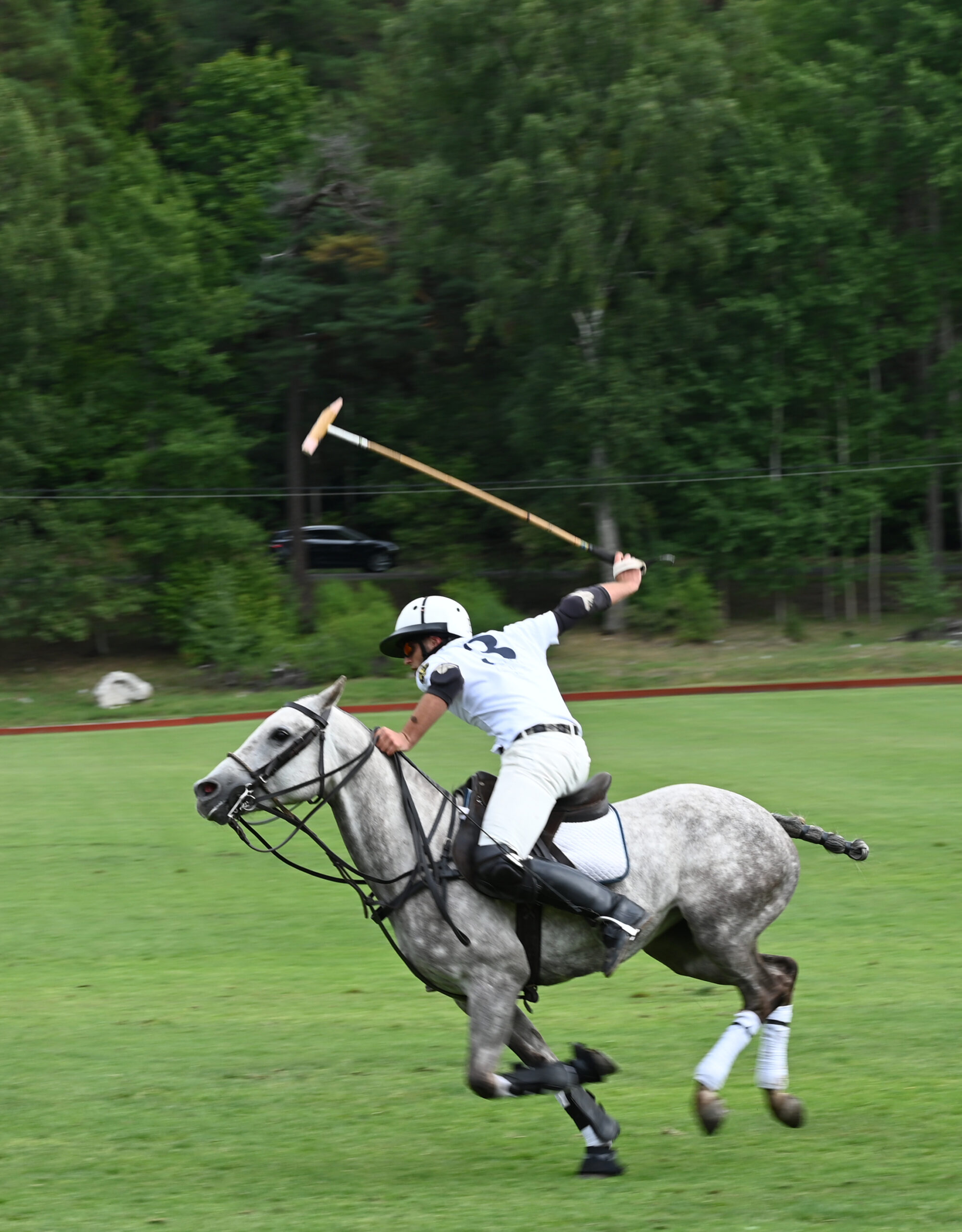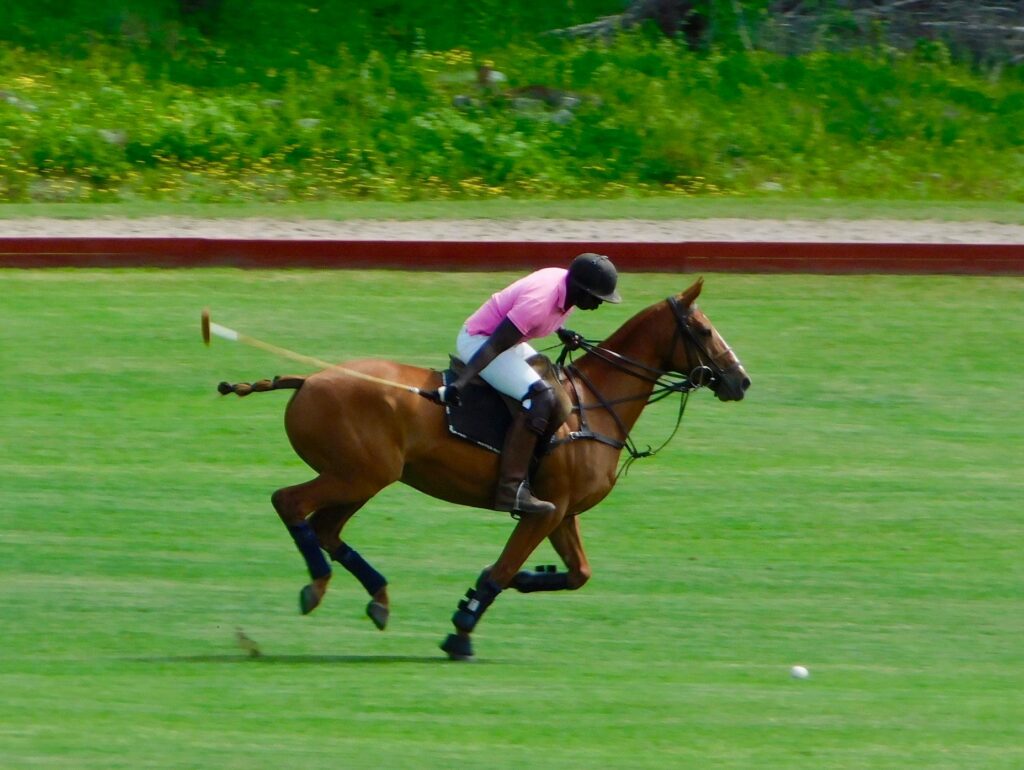
What is a polopony?
Along with the polo player’s skill, the horse he sits on is the decisive factor in the outcome of a polo match. According to the international regulations, it is allowed to use any breed of horse when playing polo. But due to the demanding nature of the sport, horses with special characteristics have been bred. The horses used in horse polo are called polo ponies. They are not a uniform breed of horse, nor are they true ponies. They have come to be called ponies because it was decided in the 1890s that a polo pony’s height at the withers could not exceed the then permitted height at the withers for a normal pony, 147 cm. Today, the average height at the withers of a polo pony is approximately 150 cm.horses used in horse polo are called polo ponies. They are not a uniform breed of horse, nor are they true ponies. They have come to be called ponies because it was decided in the 1890s that a polo pony’s height at the withers could not exceed the then permitted height at the withers for a normal pony, 147 cm. Today, the average height at the withers of a polo pony is approximately 150 cm.
Most polo ponies come from Argentina, but they are also bred in other nations where horse polo is a relatively large sport such as Great Britain, India and the United States. Polo ponies have been bred to be fast, easy to turn, brave and hardy. They have a short and quick stride so that the rider can more easily hit the ball and move smoothly across the polo field. They also need to be quick-witted and smart. In Great Britain, the thoroughbred horse Rosewater is considered to be the progenitor of polo ponies, in the USA it is primarily the quarter horse that has been used to breed polo ponies. In Argentina, where they are considered to breed the best horses for horse polo, they mainly cross thoroughbred horses with the local criollo horse breed.
The horses have special protection during training and horse polo matches. They wear leg wraps made of fabric to protect the legs against blows from clubs and the hard ball. Before training and competition, the polo pony’s mane is shaved or stubbed and the tail is cut short or tied up. It is important that neither heads nor tails risk getting stuck in clubs during the course of the game.

